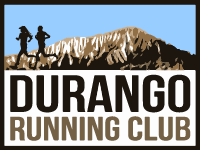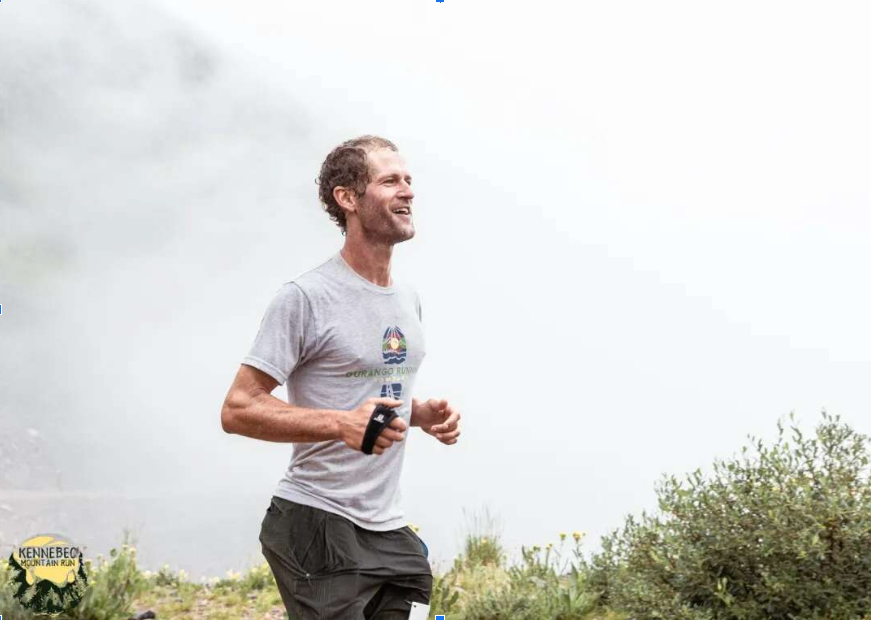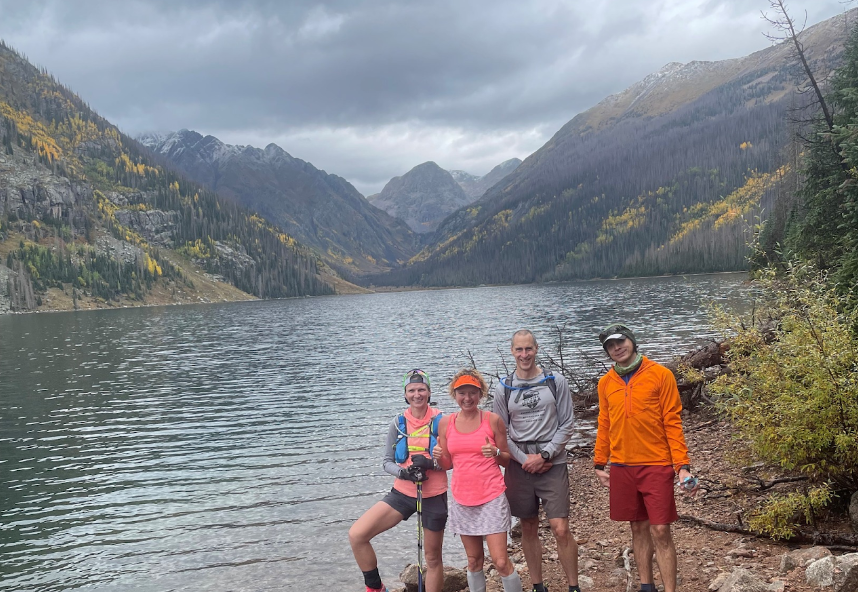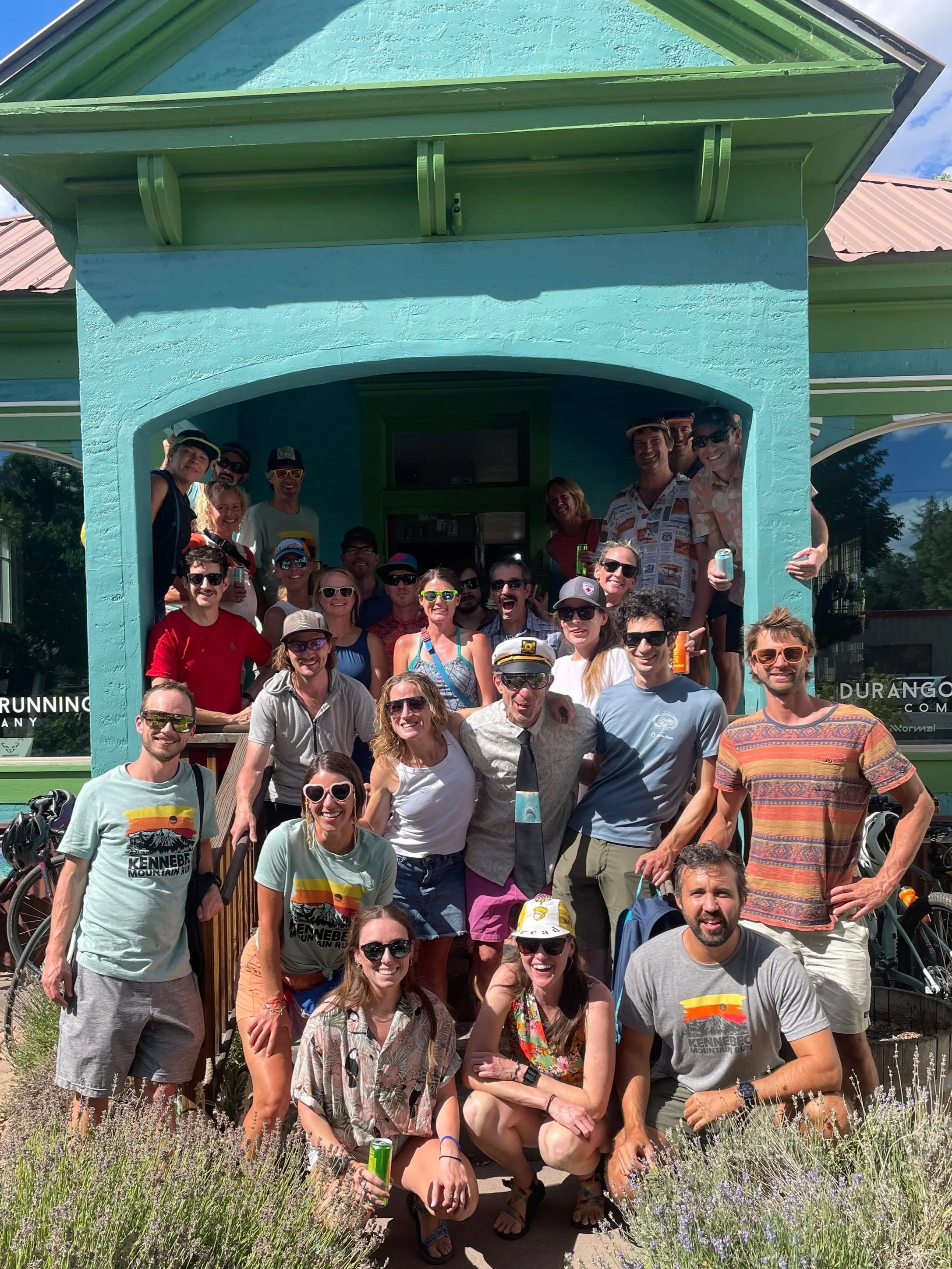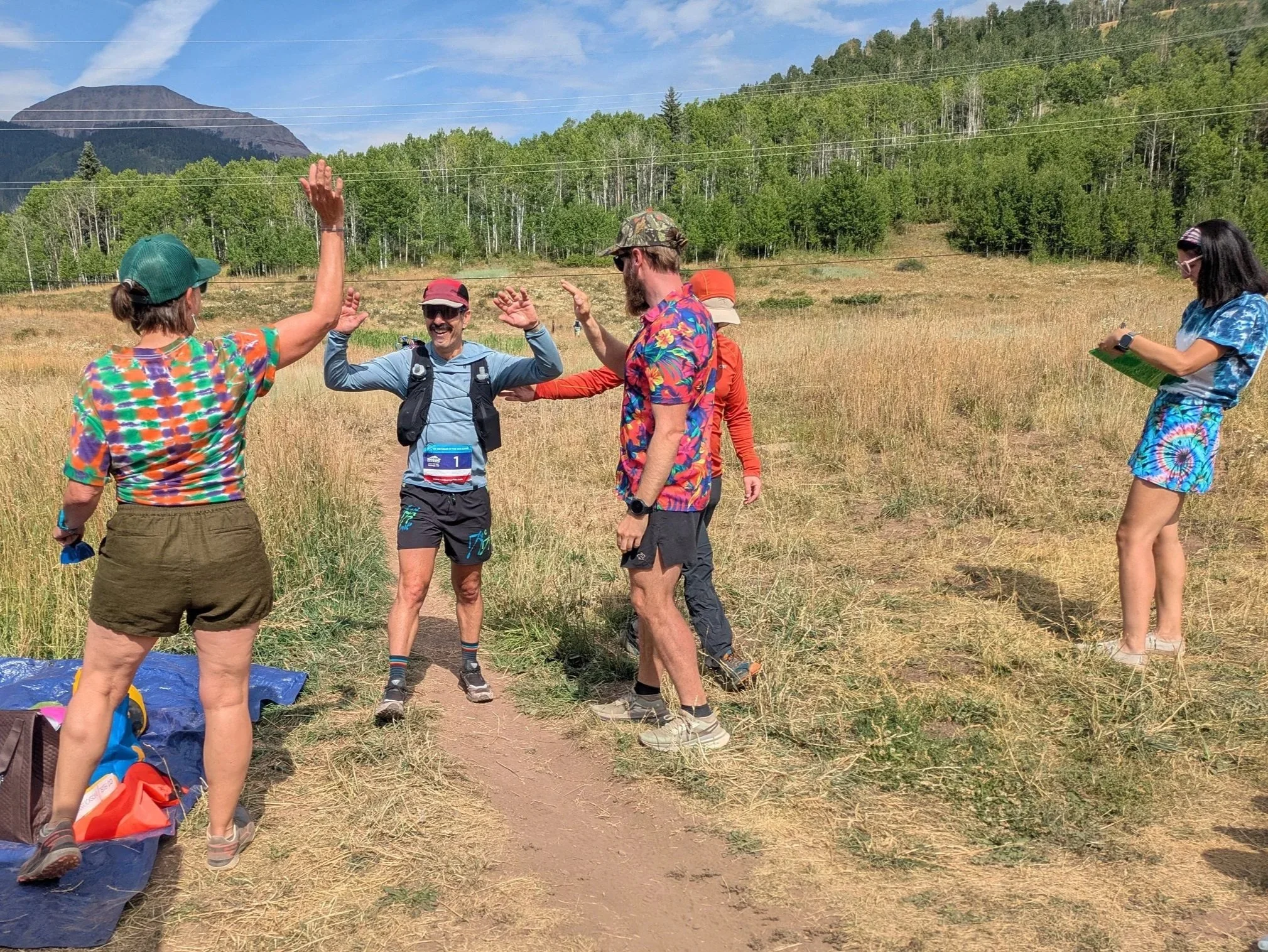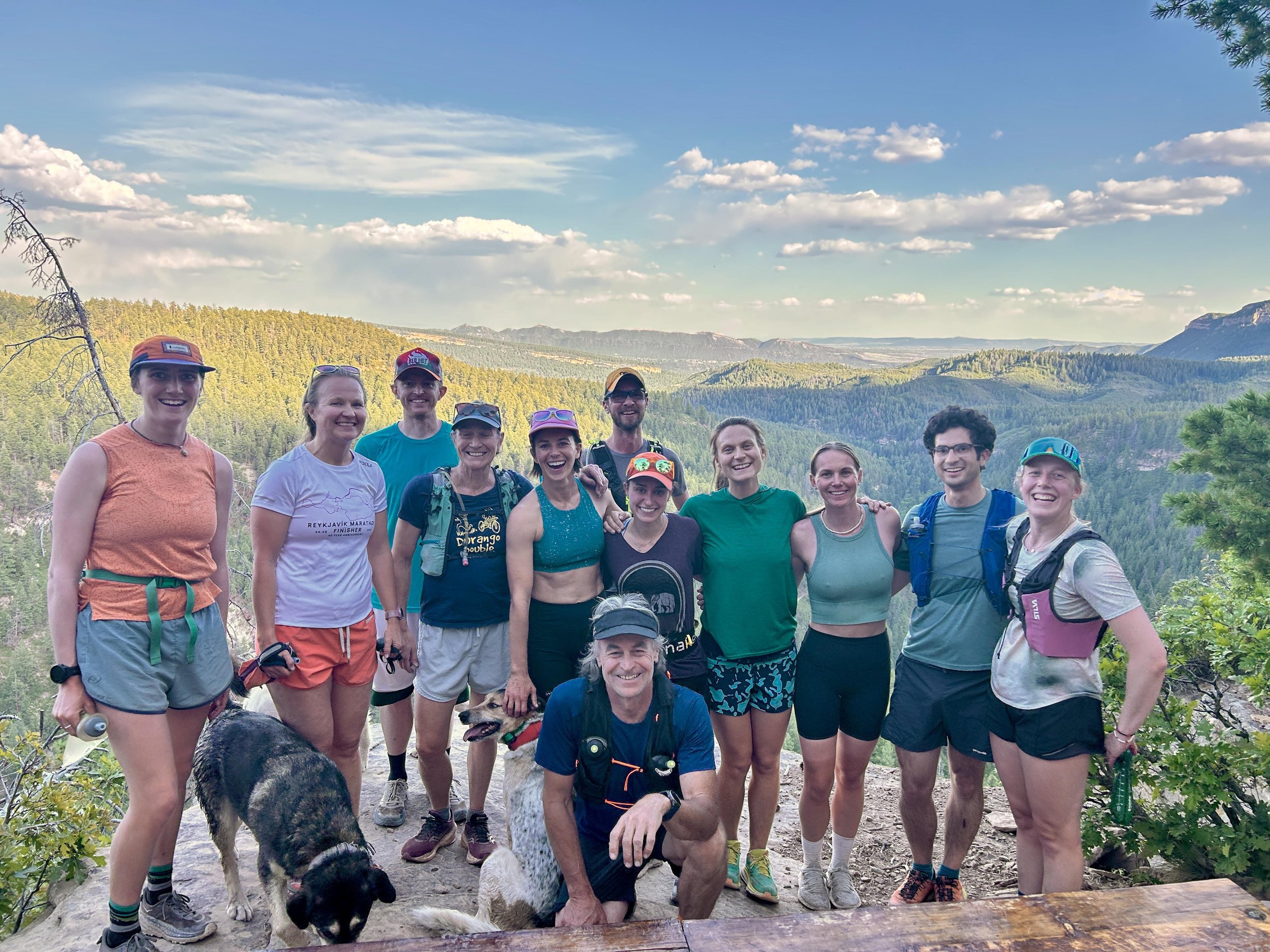On October 1, 2022, my friend and DRC member David Lunde parked his car in La Plata Canyon and started up the trail towards Parrot Peak. Early the next morning, I was notified that he had not made it back that day. Along with many other DRC members and volunteers from La Plata County Search and Rescue, I spent much of the next several days searching for him. Inclement weather cut most of the days we searched short. Three years later his body has not been found.
David running the Kennebec Mountain Run, where he finished 10th in a loaded field that year.
May We Never Forget
In three years, there has been much turnover in the Club and many of our newer members never have had the privilege of meeting David or had to deal with the shock of his passing. David was one of the kindest and most-down-to-earth people I’ve ever met. He had only moved to Durango about a year before he went missing to manage the cattle herd at James Ranch. In a post-covid era where a lot of newcomers to Durango were transient remote workers, David instantly stood out as someone that was here to be part of this community, and he made a lot of friends here very quickly.
In this blog, I’m going to be critical of many of the decisions David made the morning he went missing. Please don’t interpret that as criticisms of him as a person or his character. I truly believe, as his friend, that he would want us to remember and learn from the mistakes he made that fateful morning so we don’t make the same ones.
Don’t Underestimate the Season Change
September of 2022 was very warm and dry. I was summiting peaks in a tank top and running shorts without concern for monsoon thunderstorms or fall snow squalls. When it is that warm, it’s really hard to fathom that literally the very next day you could die from hypothermia if the weather changes. Places you went yesterday may not be safe tomorrow if they are slick due to a thin coat of snow or ice. Although David had lived here the prior winter, he had never experienced the sudden season change of the San Juan Mountains before. I think this, more than anything else, was probably the biggest contributing factor to what happened. Had he anticipated the conditions he would find himself in, I don’t think he would have attempted summiting peaks in the La Platas that morning, but given how warm and dry it had been in the days before, he was not able to anticipate the severity of the change.
A warm and clear September day at 14,000 feet just two weeks before David went missing
Have a Safety Partner
Obviously the safest decision would have been to not attempt to summit multiple peaks at that elevation given the forecasted conditions, but once he made the decision to go for it, the next riskiest decision was to attempt it alone. If he slipped and hit his head (very plausible), a running partner could have revived him and gotten him out of there before hypothermia set in. And if unable to help David themselves, a running partner could have directed Search and Rescue to a much more precise location than we were dealing with. Running with other people is also way more fun than running alone. Locally, joining the Durango Running Club is the easiest way to meet potential running partners. When doing group runs together, you will quickly recognize the other runners that are at your fitness level and can arrange to run together. I realize that sometimes it can be difficult to find a running partner for the exact route you want to do that day. Perhaps your coach prescribed a very specific mileage and vertical climbing that day in preparation for your next race. This is when you should recognize that personal safety is always more important than any training plan.
Trail Running and Mountaineering Are Not the Same Sport
The route David was attempting that day is known as the “La Plata Enchilada”, a 50km loop with 18,000 feet of vertical climbing that summits most of the peaks on the western ridge of the La Plata Mountains, crosses over at Kennebec Pass, and then summits the peaks on the east side of the canyon on the way back. This route includes the infamous knife ridge ridge segments connecting Burwell, Spiller and Babcock Peaks. When I first joined the running club, no one I knew was attempting routes like the La Plata Enchilada, at least not in one day. I did have climber friends that would complete some of the more dangerous traverses in the La Platas, but they did so with helmets, ropes, and something like the Babcock Traverse would take them all day. Instead of trying to get through the environment as quickly as possible, which tends to be a runner’s mindset, the climber’s goal is to complete such a traverse as carefully as possible - checking every handhold and foothold to make sure it’s solid before going to the next one. I’m not saying trail runners should not attempt routes that include mountain traverses, but we should always be aware of when the route we are on changes from a trail running environment to a mountaineering environment, and make sure our mindset changes at the same time.
Gear
Most of us believe that David attempted his run that morning carrying no gear at all. This was not uncommon for David. His preferred approach was to eat a big breakfast, drink out of the streams, and carry nothing with him. For a run as big as he was attempting, I suspect he probably had some bars or gels in his pockets, but that would have been it. Without knowing what happened, we don’t know if carrying some gear with him could have saved his life, but there are several scenarios where it could have. I’m not a fan of “every runner should always carry these items” lists. The gear I carry varies tremendously from run-to-run depending on many variables such as the location, time of the year, length of the run, terrain, how difficult the route is to navigate, and forecasted weather conditions.
Getting wet in the mountains can lead to being dangerously cold any time of year so every runner should carry rain gear in the mountains if there is any chance of rain. And you want something that’s truly waterproof, not just water resistant. Also be aware that a waterproof item will lose its ability to shed water over time. I learned this the hard way just last year. Needing a new waterproof layer I went to a local outdoor consignment shop and bought a GoreTex shell that appeared to be in great condition. Unfortunately, the first time I needed it (in a pouring rainstorm that arrived earlier than forecasted on top of the aptly named Hurricane Pass near Silverton), I got absolutely soaked to the bone. Luckily temps were not quite cold enough to make me hypothermic, but it was extremely uncomfortable. The lesson I learned is don’t buy used rain gear. There’s probably a reason the previous owner no longer wanted it, and that reason is likely because it leaks. And to whoever consigned what they knew was a leaky rain jacket, shame on you.
Another item David would not have carried would have been an emergency communication device. Recognizing that the cost of these devices likely discourages their use, following David’s disappearance DRC acquired two Garmin inReach units that are available to any of our members to take with them at any time, free of charge. Both units are available for checkout from the Durango Running Company. Please keep in mind, carrying a Garmin is not a get-out-of-jail free card. Proper planning is still the best way to stay safe.
If you see something, say something
I’ve certainly done and said many things, particularly in my youth, that I’m not proud of, but given that all of the good and bad decisions I made have led me to where I am today, I have almost no regrets. Almost. I have one regret that will likely haunt me for the rest of my life. David attended nearly every trail run that DRC put on in 2022, both on Wednesday nights and our Saturday long runs. On a previous DRC long run from Coal Bank to Rolling Pass and back I noticed that David did not carry any gear. Luckily we beat the rain that rolled in that afternoon and everyone was fine. However, that October 1, DRC had planned its longest group run yet, to Emerald Lake and back, 22 miles roundtrip, with a highpoint over 10,000 feet in elevation and the weather did not look promising. The Wednesday before I asked David if he planned to join, and if so I planned to offer him some of my gear to ensure he was carrying what he would all need if the weather turned on us. He informed me that, no, he planned to do his own run in the La Platas that morning. Since he was not joining the DRC run, I no longer viewed David’s gear or lack thereof as my responsibility, and did not push the issue further. That was our last conversation, and man, I wish it had gone differently.
The DRC run to Emerald Lake the same morning David went missing.
Final thoughts
This blog is obviously not the definitive guide on how to run safely in the San Juan Mountains. But hopefully, especially as we enter the season change, it will help keep safety top of mind for you and that can in turn help keep you and everyone you run with a little safer.
